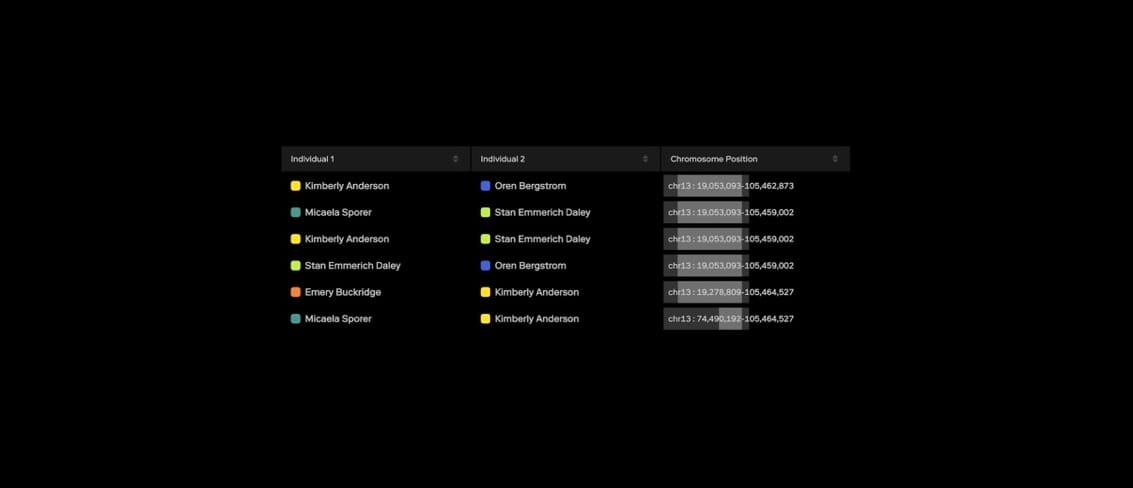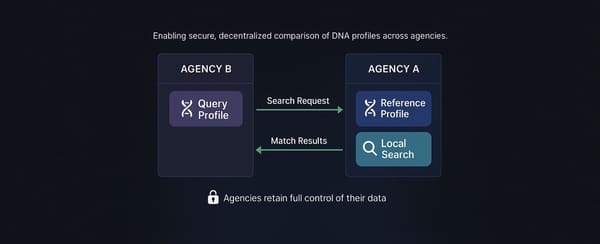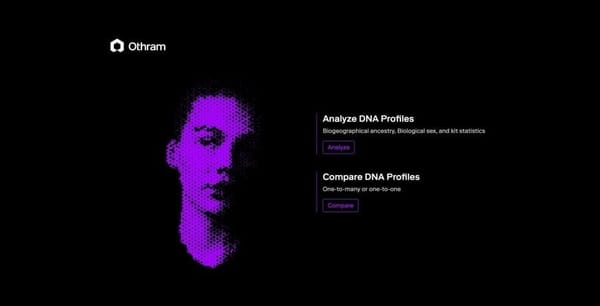We previously introduced the powerful automatic clustering feature within Othram’s Multi-Dimensional Forensic Intelligence (MDFI) platform. The goal of MDFI is to automate as much of genetic genealogy process as possible so investigators can establish identifications quickly and easily. This feature organizes matches into distinct clusters based on shared DNA segments, often corresponding to different branches of a family tree. Investigators can focus on individual clusters to prioritize which matches are most relevant to the investigation.

Since launching the automatic clustering feature, we received lots of great feedback and we have already made two enhancements to the MDFI platform. First, we list surnames associated with the clusters in the main view so that analysts can quickly scan the list to see if any provide investigative intelligence.
Second, we built a slider at the top that allows you to fine tune the clustering to be more or less conservative. This gives investigators more control in defining how related matches need to be, in order to be put into the same cluster.

Once a cluster is selected in the MDFI platform, investigators can view the individuals in that cluster, all of whom share some portion of DNA with the searched profile and are likely related to each other. This clustering is based on shared DNA across matches, but there’s a way to take this analysis even further—by focusing on shared DNA that is also in the same place in the genome. That’s where triangulation comes in.
What is Triangulation in Genetic Genealogy?
For those new to genetic genealogy, triangulation is a method used to verify that a specific DNA segment is shared between three or more individuals because they inherited it from a common ancestor. In other words, triangulation helps confirm that the shared DNA isn’t just by chance, but rather a result of a real genetic relationship where the same segment is inherited from the same spot in the genome.
Imagine three people (Person A, Person B, and Person C) all share a portion of DNA with each other. If that same segment of DNA is found in the same region of the genome for all three individuals, it’s highly likely they all inherited it from the same ancestor. Triangulation strengthens the reliability of your analysis by confirming that multiple individuals share the same genetic segment in the same location, pointing to a shared lineage.
Why Triangulation is Important
Triangulation is a crucial tool in both consumer and forensic genetic genealogy because it helps pinpoint the most relevant genetic matches and confirm that a relationship is likely genuine. Without triangulation, it can be difficult to determine if two people are related or if they share DNA due to chance.
In forensic investigations, where the goal is to identify unknown individuals or suspects, triangulation adds an extra layer of confidence. It allows investigators to establish more precise connections between DNA matches, helping them trace family lines back to a common ancestor, even when dealing with distant relatives or incomplete or low-quality profiles. Incomplete or low-quality profiles are common in forensic genetic genealogy and can make it more challenging to sort out real from spurious relatedness.
Introducing the Triangulation View
The new "Triangulation" view in MDFI extends the capabilities of the "Segment Comparison" view by building a table of triangulated segments. Let's start with the "Segment Comparison" view, shown below.

To triangulate these segments you can select the "Triangulations" button and you will see a table that shows all the shared DNA segments between the searched profile and multiple matches in the selected cluster, highlighting which segments are confirmed through triangulation.

With the addition of the "Triangulation" views, Othram’s MDFI platform continues to enhance the capabilities of forensic genetic genealogy. This new feature was designed to help investigators more accurately trace family lines back to a common ancestor, even if close relatives are unavailable in the forensic genetic genealogy database. In total, our goal with MDFI is to simplify and speed up as much of the identification process as possible through advanced tools and automation.
Explore the New Features Today
We invite you to explore these new tools within the MDFI platform. Whether you’re working to identify a suspect or unknown remains, these features are here to support your efforts and make your life easier as you work to solve cases.
Let’s work together to unlock answers and bring justice to those who need it most. Get started here.






